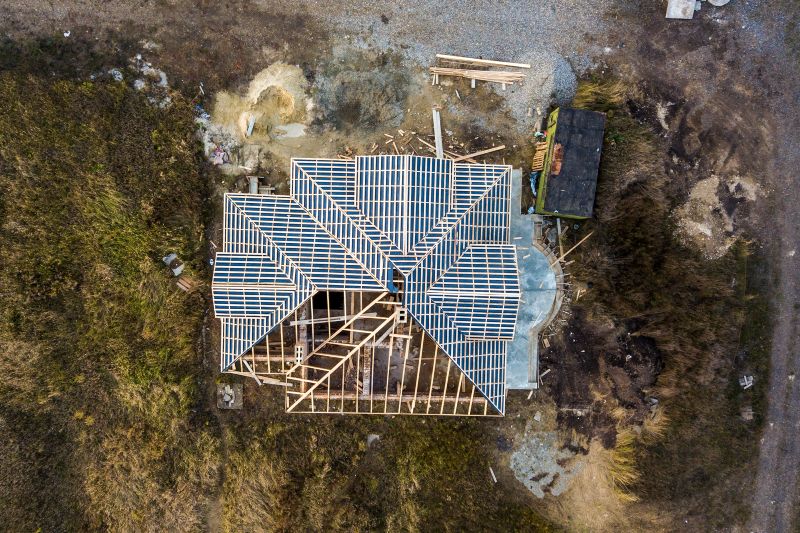Picture this: you’ve just stumbled on a centuries-old cottage with crooked beams, draughty windows and the kind of charm estate agents call “ripe for improvement”. You can already envision reclaimed oak floors and lime-washed walls, but what about the carbon quietly embodied in every brick, beam and litre of paint you’ll swap in?
Home-improvement blogs like The Home Trotters increasingly remind readers that the homes we cherish should also tread lightly on the planet. In the UK, embodied carbon from building materials now accounts for roughly 11 % of national greenhouse-gas emissions, a slice too big to ignore.
Below are the big ideas you’ll unpack as you read on.
- Embodied vs. operational carbon—why retrofits matter even in low-energy homes.
- PAS 2080:2023—the new British benchmark for whole-life-carbon management, made relevant to household projects.
- Quick wins—low-carbon material swaps, modular construction options and circular-economy design tricks.
- Measuring your impact with free calculators and product Environmental Product Declarations (EPDs).
- Supply-chain collaboration—how to nudge architects, builders and suppliers into the PAS 2080 mindset.
Why Embodied Carbon Matters for Home Trotters
The hidden carbon inside bricks and mortar
Every square metre of new flooring, tile or plasterboard arrives with its own hidden emissions tally. A UK Green Building Council guide estimates that embodied carbon can exceed operational emissions over a building’s first 30 years if it isn’t tracked from day one. Mass-timber studies show savings of about 19 % compared with steel-framed counterparts, proving that material choice alone shifts the dial. Meanwhile, modular residential projects analysed across Europe delivered average embodied-carbon cuts of 15 % and waste reductions beyond 80 %, thanks to factory precision and shorter site programmes.
PAS 2080 in a nutshell
First published in 2016 and overhauled in 2023, PAS 2080 is the British Standards Institution’s publicly available specification for managing whole-life carbon in the built environment. The 2023 revision broadens the scope from mega-infrastructure to ordinary buildings and insists on early-stage optioneering, supply-chain collaboration and transparent data reporting. If you want a step-by-step breakdown of PAS 2080, this independent deep dive unpacks the clauses in plain English, handy bedtime reading before your next design meeting.
Practical Steps for Low-Carbon Home Projects
Measure before you manage: free tools for householders
You can’t cut what you haven’t counted. Free calculators such as the RICS Whole-Life Carbon Assessment modules or OneClick LCA’s Carbon Designer for Houses let you plug in floor area, material choices and local benchmarks for a first-pass audit. Make sure suppliers provide EPDs; under PAS 2080 clause 7.2, data quality and transparency are non-negotiable.
Prioritise low-impact materials
Switching from Portland cement render to lime plaster slashes embodied carbon by up to two-thirds and improves breathability in heritage walls. Recycled-content insulation boards, FSC-certified timber and bio-based finishes such as clay paints keep carbon budgets lean while delivering healthy indoor air.
Embrace modular and off-site techniques
Factory-built bathroom pods or SIP-panel extensions minimise site waste and shrink programme timelines, useful when the British weather decides to pour. Studies show off-site methods can curb material waste by 90 % compared with traditional brick-and-block builds. Pair modules with low-carbon concrete mixes (higher GGBS content) and you double your gains.
Design for disassembly and future reuse
Circular-economy principles now sit front and centre in PAS 2080’s systems thinking. Select reversible fixings, exposed structural timber and modular flooring that can be lifted and re-laid. Your future self, redoing the kitchen in 2045, will thank you when hardly anything heads to landfill.
Navigating the New PAS 2080:2023 Requirements
What’s new for householders and small developers
The headline change is the explicit inclusion of buildings, meaning your loft conversion now falls under voluntary but widely adopted best practice. The standard’s six-step cycle, target, baseline, optioneer, deliver, operate, verify, resembles a home project checklist and helps you avoid carbon “lock-in” mistakes like overspecifying steel or skipping airtightness tests early on.
Aligning supply chains and data reporting
PAS 2080 demands that designers, contractors and material suppliers share a common carbon-budget baseline. So, ask your architect for a digital material passport and insist your builder logs wastage weekly. Simple spreadsheet trackers count as compliance for small projects, provided they capture manufacturer EPDs and on-site waste tickets.
Linking personal goals with national net-zero policy
Future Homes Standard 2025 will cap operational emissions in new dwellings, but embodied carbon is not yet regulated. By embedding PAS 2080 in project briefs today, you stay ahead of likely policy curves and align with industry roadmaps urging whole-life-carbon targets no higher than 300 kg CO₂e/m² by 2030.
Inspiring Case Studies
An all-electric retrofit in the Cotswolds
A 1970s bungalow recently refurbished with heat-pump technology, cellulose insulation and recycled-steel roof trusses achieved a 63 % embodied-carbon saving compared with a conventional knock-down-and-rebuild route. The project team credited early PAS 2080 optioneering workshops for steering them toward material reuse.
A mass-timber extension in Glasgow
When a terraced Victorian house needed extra living space, designers chose cross-laminated-timber (CLT) for its light weight and 19 % lower carbon footprint than a steel-frame alternative. Panels arrived on site pre-cut, slashing noise and dust, welcomed by the neighbours, and embodying the modular philosophy championed earlier.
Embracing PAS 2080 doesn’t mean abandoning cosy interiors or timeless façades; it simply asks us to track the unseen impacts and make smarter choices. Whether you’re swapping windows, adding a loft dormer or building your dream forever home, the tools and standards now exist to keep that carbon ledger in the black, and your conscience clear.


